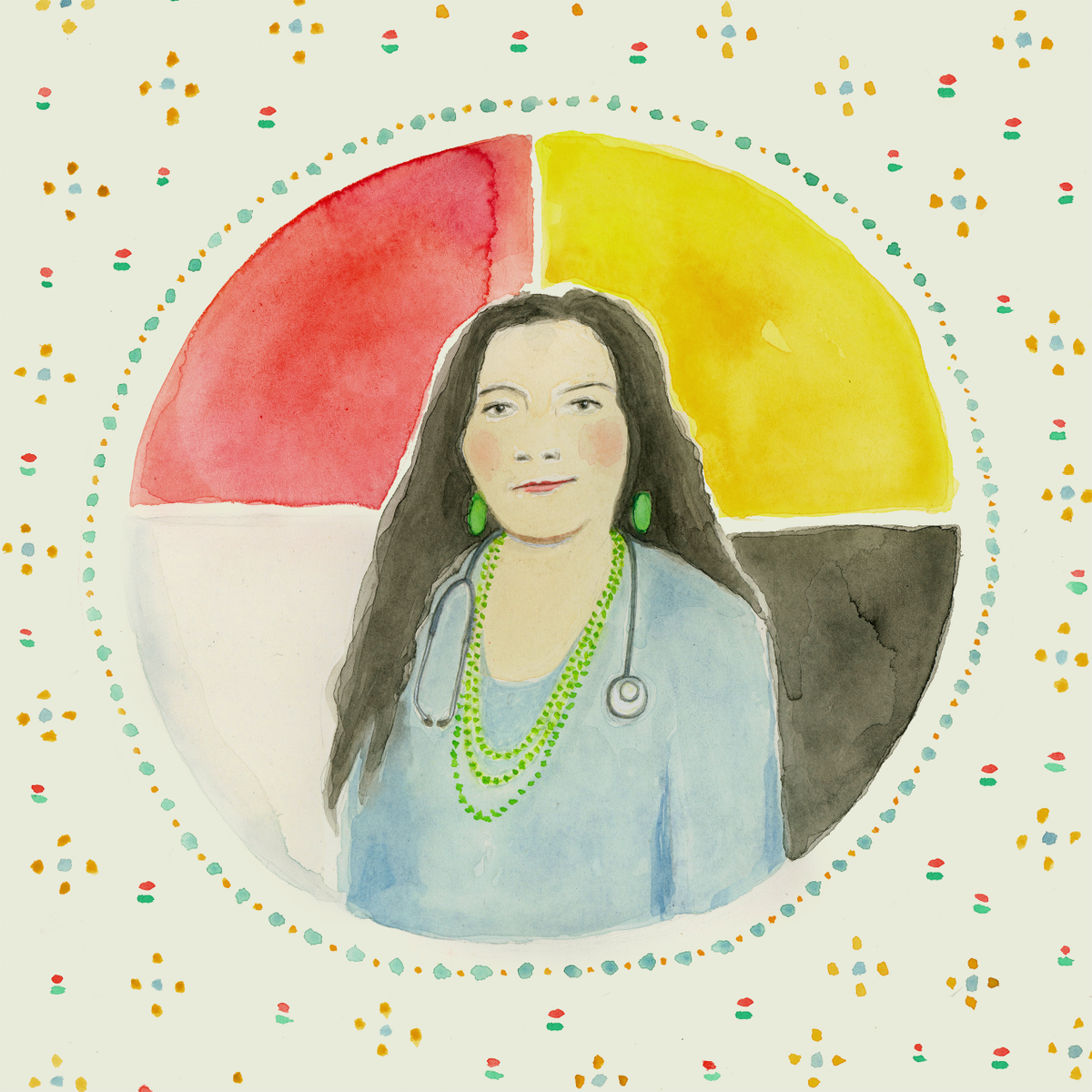When Margaret Moss was in nursing school in Portland in the 1980s, the only things she learned about American Indians were stereotypes: Indians don’t look people in the eyes, and if their hair has to be cut, they want the trimmings returned. Moss, a member of the Mandan, Hidatsa, and Arikara Nation who grew up moving around the country with her family for her dad’s Veterans Affairs job, knew that this was a gross simplification of Indians and their medical needs.
So Moss, who now has a doctorate in nursing and is a professor and assistant dean of diversity and inclusion at the University at Buffalo’s School of Nursing, spearheaded * (2)*, the first nursing textbook focused on American Indians and Alaskan Natives.
Moss and 12 contributors, nine of whom are American Indian nurses, researched and wrote about the unique medical and cultural-based needs of the 567 federally recognized tribes and 66 state-recognized tribes in the United States. The textbook has chapters for nine geographic regions, plus a section focused on the 60 percent of Indians who live in urban areas off a reservation.
American Indians have pressing health issues. According to the Indian Health Service, the Pima Indians of Arizona have the highest diabetes rate in the world. One in three American Indian women are assaulted or raped in their lifetimes, and boys born today on the Pine Ridge reservation in South Dakota aren’t expected to live to their 50th birthday. It’s the lowest life expectancy in the Western world.
“In our backyard, there are these horrible statistics,” Moss said. “But people fly off to other places to try to save people.”
Moss picked contributors from different parts of the country who could write about the culture and issues in each region. Marilynn Malerba, the first woman to be chief of the Mohegan Tribe in modern history and a registered nurse, wrote the Northeast chapter. Nicolle Gonzales, a member of the Navajo Nation and midwife who started the first (3), wrote the Southwest chapter. Moss cowrote four chapters, wrote four more on her own, and said she learned new things as she edited the book. For example: The impact of segregation on American Indian populations in the South, where it was unsafe for them to admit they were Indian up through the Jim Crow era.* And that Alaskan Natives, even without forced relocation and with a reservation system that was disbanded in 1971, still suffer the same social and health problems that affect those in the contiguous United States.
Besides usual health problems, there are unique cultural considerations for American Indians. Some members of the Plains tribes use sweat lodges, a potentially dangerous activity if they suffer from high blood pressure or diabetes, which many of them do.
“They are stuck between two worlds,” Moss said. “They think, *I need to do this for spiritual reasons, but my doctor would be horrified if they knew I was doing this*.” When nurses know about these clashing pulls, they can work to find compromises for their patients, like limiting the time spent in the sweat lodge.
Holistic nursing practices, with their focus on the relationship between a person, the environment in which she lives, and her health, have similarities with the way American Indians view their relationships to their homes. Nursing’s four pillars of holistic care — spiritually, mentally, psychically, and emotionally — also match up with the medicine wheel and its four directions. The medicine wheel, which was a common symbol in some Plains tribes, and has been adopted by (1) groups, often signifies four different aspects of life.
Beyond getting better care for the five million Indians living in the United States, Moss hopes this book inspires more American Indians to go into nursing. Moss was just the 13th American Indian to get a nursing doctorate in 2000, and only a dozen or so more have joined her ranks since then.
“How many people can say they never had someone from their culture teach them?” she said. “The book is a way to extend our reach.”
*Jackie Snow is a journalist based in Singapore attempting to try every nasi lemak the city-state has to offer.*
** **Correction June 1, 2016:** The newsletter version of this article erroneously stated that Moss cowrote three chapters.*
1) (http://www.amazon.com/gp/product/0826129846/ref=as_li_tl?ie=UTF8&camp=1789&creative=9325&creativeASIN=0826129846&linkCode=as2&tag=lennyletter-20&linkId=FYFLP7AVXBRJNYA4)
2) (http://www.huffingtonpost.com/entry/meet-the-midwife-starting-the-first-native-american-birth-center_us_5626889de4b08589ef4939e8)
3) (https://en.wikipedia.org/wiki/Pan-Indianism)



